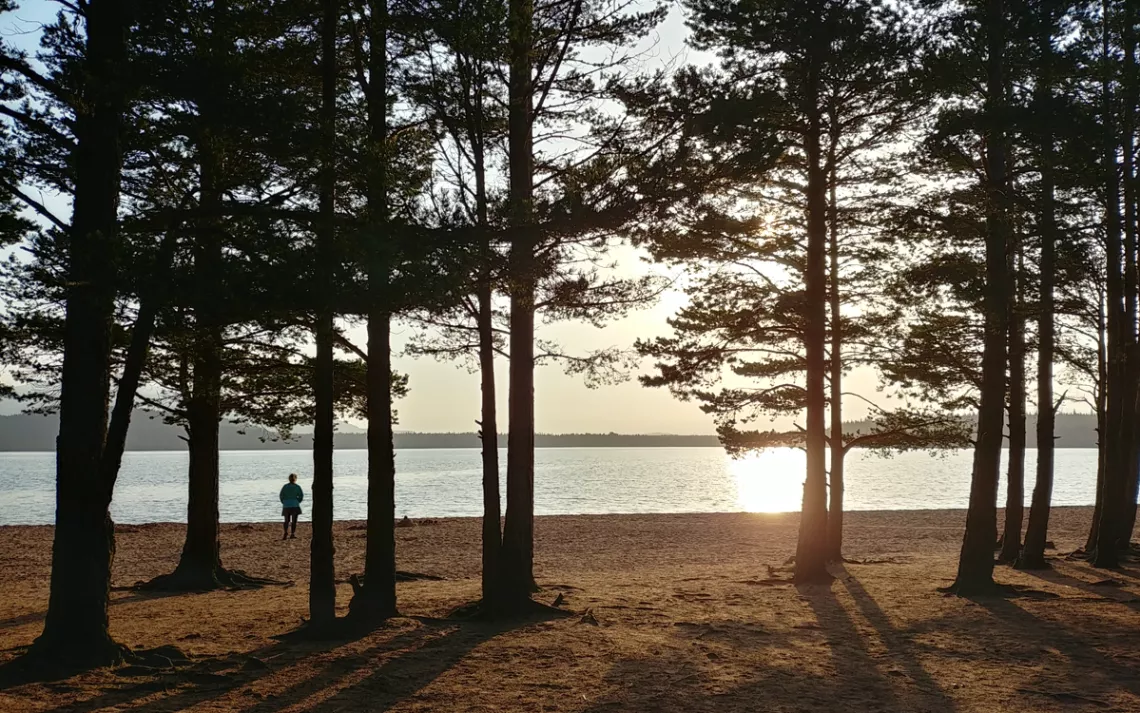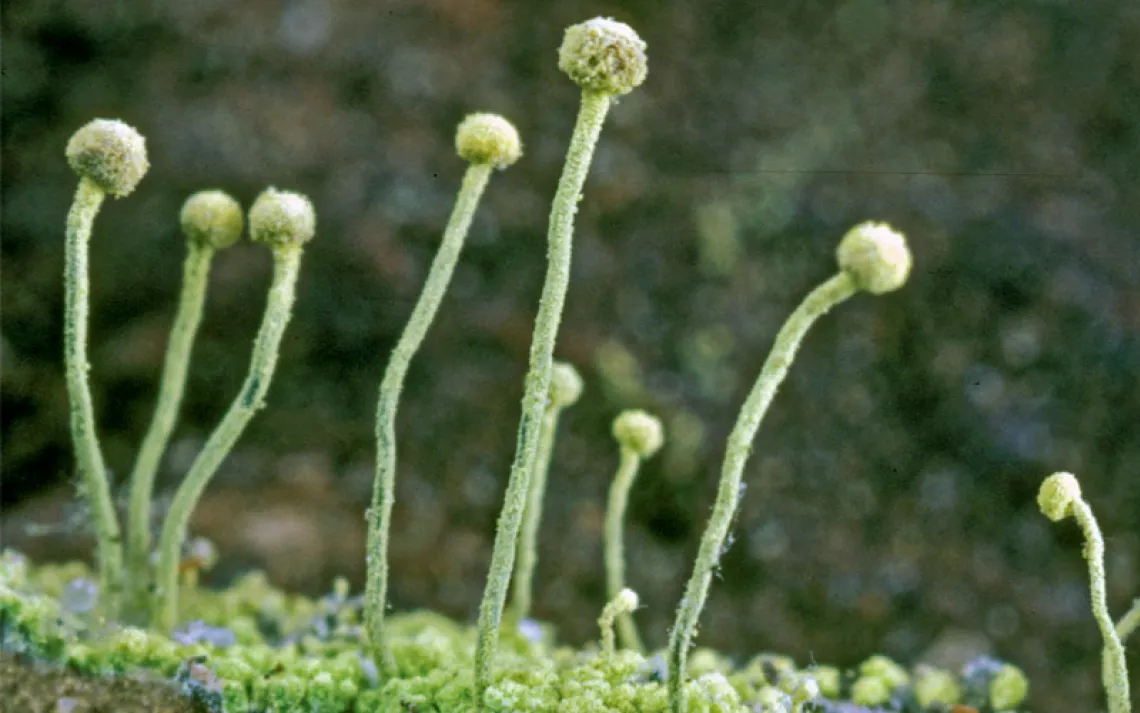Why Scotland Is Opening a Dementia Center in a National Park
Uncovering the power of nature for people with dementia

Photo by iStock/Scott Kostric
When Gillian Councill and Kenny Wright of the nonprofit Alzheimer Scotland met with people living among their country’s Cairngorms mountains, they heard a refrain: Locals with dementia couldn’t get out into nature as they once loved to do.
One former Cairngorms National Park ranger explained he was still an avid mountain biker, but after showing up for a swimming class at 9 P.M. instead of 9 A.M., he knew going places on his own was getting harder. A different man, who’d logged many hours hiking and biking the area, said he’d begun to worry when he found himself getting lost.
The loss of such beloved connections with nature was significant. Outdoor activities like birdwatching and hiking have well-known physical and mental health benefits, for one. But for an individual with dementia, giving those activities up can also feel like a profound part of their identity is slipping away.
Following a number of conversations with people with dementia living in and around Cairngorms National Park, Wright and Councill began to experiment with ways to bring those they serve back into the outdoors. That was five years ago. This fall, their vision will have a permanent home—at a new center for people with dementia that’s located within Cairngorms National Park itself.
*
Even for people who’ve spent much of their lives outdoors, dementia makes nature harder to access, Wright says. Planning and organizing is one barrier. Someone with dementia may be physically frail and need a hand to safely navigate the landscape. Some might face resistance from family concerned about risks. Particularly in care facilities, even spending time outside in a garden, which may have obstacles or slippery surfaces, can be a challenge because of insufficient staff.
So when Wright and Councill decided to trial outdoor events, they started small. With help from government agency Forestry and Land Scotland, they found a little clearing nestled into the Scots pine forest near Cairngorms National Park’s Loch Morlich. It seemed made for a tent, recalls Councill. From that spot, a short walk led to a white-sand beach where the bald tops of the Cairngorms range loomed over the lake. In the clearing, organizers hung a makeshift canopy, climbing a tree to rig it, and set up vintage flowery deck chairs and camping furniture they’d brought from their own garages. But on a cold September day in 2017 when they held the first event, Wright remembers having no idea if anybody would show up.
They did. About 18 people came, including people with dementia and their family members, all bundled up for the day outside, Councill recalls. The group told stories around a campfire, drinking tea and nibbling ginger cake with white icing baked by Councill’s mother. By the end of that day, Councill knew the outdoor sessions needed to continue.
“It felt like people were given an opportunity to reconnect with something that was hugely missing in their lives,” she says. At monthly outdoor sessions, participants identified trees and birdsong. They learned local folklore and practiced wood carving. They carried on meeting that first winter in a nearby visitor center. The next year, Alzheimer Scotland used grant funding to buy a large tipi-style tent with a wood-burning stove so they could continue meeting outside.
Over the days Councill spent leading the tipi sessions, she noticed how in the outdoors, anxieties and stress related to dementia dissipated. “You know that feeling of trying to remember something or trying to achieve something?” Councill says, describing pressure that many with dementia may particularly feel. “Nature's got a special way of taking that away. It feels like people can just be a little bit more.
Wright saw the project’s impact in myriad ways: He recalled observing a friendship blossoming between two men with dementia. “I can picture them walking through the woods, just having a blather,” he says. One woman, an enthusiastic gardener who’d missed the outdoors since moving from a house to an apartment, would become anxious on the drive, not recognizing the route. But when she got out of the car, Councill remembers, she brightened and exclaimed, “Oh, I’m home.”
Another local, who reminisced about swimming in rivers and “getting mucky” while growing up in the Aviemore area, went walking every day, Councill says. But on some days she also attended a care center with a locked door where, according to her family, she spent a lot of time trying to get out. On walks in the woods, Councill saw the woman putting her arms out to the side, Titanic style. “For me, that was a real symbol of freedom,” she says.
As word of the project spread, a wait list grew. In other services for people with dementia, Wright notes, there’s usually turnover as it becomes harder for some to participate as their condition progresses. But that didn’t happen. “If people might struggle to engage with a particular activity, that didn't really matter,” he says. Just being in the tent and in the midst of nature was a sensory experience. “They benefitted a lot from that and felt part of something, I think.”
*
Activities based in nature can help maintain one’s sense of identity, says University of Worcester dementia researcher Simon Evans, particularly for people who’ve enjoyed the outdoors throughout their lives. And while for some that might be gardening or other low-impact activities, some people with dementia may also wish to seek out extreme sports like skydiving. “People who have been fairly intrepid during their lives, just because they've got dementia doesn't mean they shouldn't be allowed to take those kinds of risks still,” he says.
And amid a growing movement to recognize the human rights of people with dementia, access to outdoor activities is getting more attention. Britain is embracing social prescribing, a practice where health workers refer patients to activities like museum visits or nature experiences. These changes come as the number of people with dementia worldwide is rising. And across the globe, initiatives are incorporating nature in caregiving with promising results.
Spending time in urban woodlands supports feelings of self-worth for people with dementia, one study found. Research into farm-based care programs for people with dementia, most common in the Netherlands and Norway, found the largely outdoor services boosted social engagement and physical activity while relieving family caregivers. For people living in care facilities, spending time in gardens has been found to reduce agitation and promote calm.
*
When the new Alzheimer Scotland outdoor dementia resource center opens in Cairngorms National Park next month, it will be a 10-minute drive from that first gathering spot by Loch Morlich. Housed in a repurposed building at Badaguish Outdoor Center, the center is in a meadow fringed by Scots pine and highland vistas.
Five days a week, the center will be open on a drop-in basis. Councill and Wright hope to offer wide-ranging programs such as birdwatching, forest bathing, mountain biking, and canoeing. A surrounding trail network will be marked with clear wayfinding signs.
The center’s roughly $1,100,000 budget came through a larger grant, including a slew of initiatives aimed at using the national park to improve public health, explains project manager David Clyne. Clyne’s own father had vascular dementia, he recounted, and later in his life spent much of his time seated indoors watching television. The new center’s services will have a broader reach, he thinks, in part by helping the loved ones whose lives are also shaped by dementia. “It's not just one individual,” he says. “It’s a condition which impacts family, friends.”
Councill hopes the new center can also prompt others to think differently about the types of spaces and activities that are generally available to people with dementia. “When people get a diagnosis, sometimes it can feel like everything's negative and there's a focus on loss and what you can't do,” Councill says. “I suppose it's trying to turn that around a little bit and focus on what people can still do.”
 The Magazine of The Sierra Club
The Magazine of The Sierra Club







